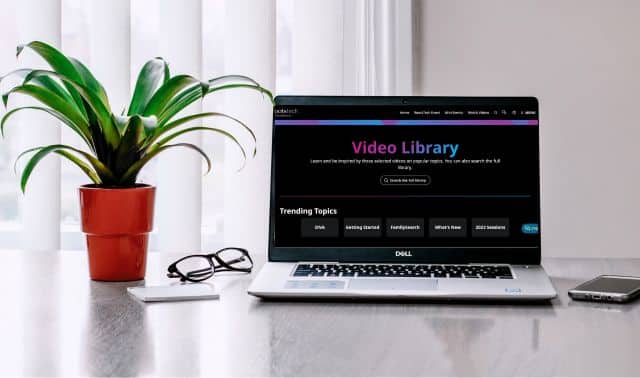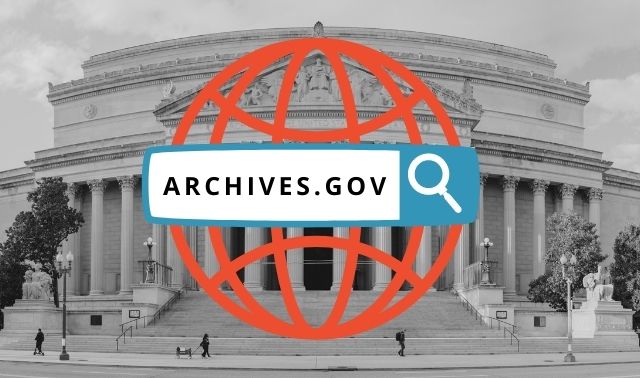Roots researchers reserve the term mecca for Salt Lake City, home of the Family History Library (FHL). But when they describe genealogical nirvana, another destination quickly comes to mind: Fort Wayne, Ind.
Family history isn’t merely a hobby in this Midwestern metropolis, it’s a top tourist attraction. Nearly 110,000 people from all over the country — and around the world — travel here each year just to trace their roots.
The reason Fort Wayne is on every researcher’s radar: Indiana’s second-largest city boasts the second-largest genealogy library in the world, the Fred J. Reynolds Historical Genealogy Department at the Allen County Public Library (ACPL) <www.acpl.lib.in.us/genealogy>. Over the past 42 years, the department has amassed a whopping 317,000-plus printed volumes, including 49,000 family histories, and more than 306,000 records in microform. Its collection is surpassed only by the FHL, and it’s tops among all public libraries.
As a local library, the ACPL doesn’t ship its resources across the globe as the FHL does through its branch Family History Centers. The ACPL’s genealogy materials don’t circulate, so you have to trek to the main library in downtown Fort Wayne to revel in its resources. You’ll discover it’s worth the trip — but you’ll have an easier time finding genealogical bliss here if you get acquainted with the library first.
The genealogy department is on the second floor; you enter in the main reading room, by the orientation area. You can register here to exchange data with other researchers and pick up PathFinder research guides. These 13 pamphlets outline resources for ethnic ancestries (French Canadian, Irish) source types (census, heraldry) and special topics (adoption). Ask to watch the orientation video, which explains library materials and procedures. (Or view it ahead of time on the library’s Web site using software such as RealPlayer.)
Inside the main reading room, you’ll find printed matter — books, indexes, periodicals. The department has all the standard roots references, from the American Genealogical-Biographical Index to the National Union Catalog of Manuscript Collections, plus a supply of statewide references and finding aids. These books are on open shelves for easy access, along with frequently consulted military, international, Native and African-American, Daughters of the American Revolution (DAR), heraldry, Quaker and Allen County references.
But the shelved materials are just a sampling of the ACPL’s stellar book collection. Besides its numerous compiled genealogies, the department owns more than 150,000 local history books: county and town histories (including foreign places) and cemetery, church, court, land, naturalization, probate and vital records. Look for these sources in either the online or card catalog, and then fill out a request slip for the titles you want.
ALLEN COUNTY PUBLIC LIBRARY
900 Webster St.
Fort Wayne, IN 46802
(260) 421-1200
<www.acpl.lib.in.us/genealogy>
Hours:
Monday through Thursday 9 a.m. to 9 p.m.
Friday and Saturday 9 a.m. to 6 p.m.
Sunday 1 to 6 p.m. (Labor Day through Memorial Day)
FORT WAYNE/ALLEN COUNTY CONVENTION & VISITORS BUREAU
1021 S. Calhoun St.
Fort Wayne, IN 46802
(800) 767-7752
DOING YOUR HOMEWORK
Before you make a genealogical pilgrimage to Fort Wayne, set yourself up for success: Comb the ACPL’s online catalog from home so you can arrive at the library with a checklist of sources in tow. Then you’ll be able to dive right into the library’s resources rather than frittering away research time trying to identify them.
To access the catalog, follow the link on the ACPL home page or click WebCat on the genealogy page. You’ll discover it works much like other libraries’ catalogs. Its front door is a Quick Search, where you enter a keyword or phrase (choose exact) to search or browse. You can limit your query to family history holdings by selecting Genealogy from the library pull-down menu (a testament to the department’s popularity — it’s the only individual department on a list of ACPL branch libraries). Then click Author, Title, Subject, Series, Periodical Title or Search Everything to launch your query.
Complex Search gives you six fields to construct advanced boolean searches (using and, or and not) with keywords, authors, titles, subjects and series. You’re also able to limit the query to a specific library branch (again, including the genealogy department), language, format, year of publication and other options. Call No. Browse is helpful if you’ve found a title and want to know what related material may be available; it’s a way of virtually wandering the stacks.
Besides searching the general catalog, you can remotely tap the ACPL’s mammoth periodical collection through GENESIS (<olympus.acpl.lib.in.us/Genesis> or use the link on the genealogy page). This database lets you look up titles and bibliographic records of family history-related journals, magazines, newsletters and other serial publications. (You need PERSI to search those periodicals’ contents.)
These catalogs cover only printed materials; to hunt for specific info in filmed resources, use the genealogy department’s on-site microtext catalog. You’ll find more tips for using online library catalogs in the February 2002 Family Tree Magazine and in Rhonda McClure’s The Genealogist’s Computer Companion (Betterway Books).
Of course, genealogy’s trademark record format is microfilm, and you’ll find plenty of that here, too. The ACPL is one of the few public libraries that has the entire US census: 1790 to 1930 population schedules; 1890 schedules of Civil War Union veterans and widows for half of Kentucky and L through W states (the rest of that census burned); and all statewide indexes and Soundexes (indexes that consolidate similarly spelled names). You can also dig into state and territorial censuses covering 18 states, primarily in the Midwest. For ancestors (and researchers) from up north, the ACPL has every Canadian census from 1666 to 1891.
Those census records are a highlight of the library’s great Canada collection, which includes some essential French Canadian and Acadian sources. You’ll also find passenger lists from the Canadian ports of Halifax and Quebec among the ACPL’s immigration-records stockpile. The library holds most National Archives passenger lists and indexes, so it’s a great place to trace immigrant origins.
It’s a great place to research military ancestors, too, particularly Civil War soldiers. You’ll have access to a bonanza of microfilmed National Archives service and pension records, spanning the Revolutionary War to the Philippine Insurrection. The Civil War collection comprises these films, plus regimental histories on microfiche, microfilmed Confederate records from state archives and printed adjutant generals’ reports, lineage society publications, soldier diaries and more regimental histories.
ACPL’s other filmed resources include city directories from 1785 to 1935, Sanborn fire insurance maps of Indiana, land ownership maps from the Library of Congress and Colonial newspapers from Maryland, Pennsylvania and Virginia.
This mother lode of microfilm and microfiche awaits in the microtext archive. Use the microtext catalog — a separate directory of filmed materials — to locate these sources. You’ll find census and passenger-list indexes in the microtext index/printer room.
ACPL offers plenty of electronic resources, too. The department has Internet or intranet access to all the FHL’s FamilySearch files, along with a long list of reference databases. Like the genealogy materials, these sources can be used only on site, so prepare to spend much of your time in Fort Wayne cramming in research.
Still, there’s plenty of historical fun to be had when you tire of scouring the umpteenth Johnson Family History. Jaunt around the corner to the Firefighter’s Museum (226 W. Washington Blvd., 260-426-0051) to tour an 1893 engine house and eat lunch amidst fire-fighting relics at the museum’s Old No. 3 Firehouse Cafe.
Two popular destinations lure history lovers to the east side of downtown. The History Center (302 E. Berry St., 260-426-2882) houses Old City Hall Historical Museum, Fort Wayne’s historical seat of government and criminal detainment (it was also the local jail). Here you’ll see Gen. “Mad” Anthony Wayne’s camp bed, Miami Chief Little Turtle’s watch and sundry other artifacts. If you have roots in this area, make an appointment to research in the Allen County Historical Society ‘s archives, also in the History Center.
Civil War buffs should head across the street to the Lincoln Museum (200 E. Berry St., 260-455-3864, <www.thelincolnmuseum.org>). Honest Abe didn’t have personal ties to this area, but the city is home to the Lincoln National Life Insurance Co. Arthur Hall, the company’s founder and a lifelong admirer of the president, established the research foundation that created this museum in 1931. Interactive exhibits teach you what life was like for Lincoln — and your ancestors. You can read the president’s mail, decorate the White House or fight a Civil War battle. As you follow Berry Street back toward the library, you’ll spy the Allen County Courthouse (715 Calhoun St., 260-449-4246), one of the city’s architectural gems.
Fort Wayne’s best-known historical claim to fame is that it’s the burial site of John Chapman, aka Johnny Appleseed. Each fall, the city honors the legendary tree planter in a festival at Johnny Appleseed Park.
Of course, you’ll also need places to rest and refuel for your next big day of research. Two downtown hotels are within walking distance of the ACPL, and both cater to family historians with a “genealogy package” discount. The Hilton Fort Wayne Convention Center (1020 S. Calhoun St., 260-420-1100, <www.hilton.com>) sits a mere two blocks from the library, at the corner of Calhoun Street and Washington Boulevard. The Holiday Inn Downtown (300 E. Washington Blvd., 260-422-5511, <www.sixcontinentshotels.com/holiday-inn>) is three blocks farther down Washington.
Outside downtown, the Fort Wayne Marriott (305 E. Washington Center Road, 800-228-9290) and Travelodge (4606 Lincoln Highway E., 260-422-9511) also offer family history discounts. Bed-and-breakfast buffs can sojourn at the Carole Lombard House (704 Rockhill St., 260-426-9896), childhood home of the ’30s screwball-comedy star. It’s in the historic West Central neighborhood.




